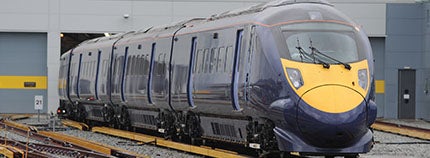
TRE products are ideally suited for use with European Rail Traffic Management Systems (ERTMS).
As the railway continues to evolve and change to meet the growing demands on capacity, efficiency and reliability, the industry must meet the challenge and develop the necessary skills and capability to match.
As the premier supplier of signalling and operational simulators in the railway domain, TRE utilises complex modelling techniques to replicate the exact infrastructure of any part of the rail network to accurately represent the real world. Interlocking data, the characteristics of locomotives and rolling stock are also included and the modelling techniques have now been expanded to include ETCS level 1 to 3 systems.
Simulation has become increasingly important as the complexity of command and control systems increases. TRE’s suite of simulation tools can be used in a wide variety of scenarios beyond training and competence management into design validation to ensure that new or improved engineering works will deliver the desired system performance and capacity improvements. TREsim provides an ideal basis for these applications and includes a uniquely engineered display system to support this process.
The structure of TRE products and the capabilities and experience of its engineer’s enables the company to simulate ERTMS. As an example, TRE has worked with others to integrate a system that combines driver and signaller simulators in a single package. The system forms the key elements of a major European driving, signalling and traffic management training facility in Norway.
In addition, TRE’s Signallers Assistant, TREsa, with Automatic Route Setting and control facilities, has also been designed to be compatible with various signalling control systems including ERTMS.
TREsa is designed in conjunction with the infrastructure manager and a leading signalling supplier. It allows the operators to configure, select and test variations in operational parameters on a minute-by-minute basis to meet the local operational requirements. This new flexible functionality provides the signaller with a unique tool to actively manage the railway.
